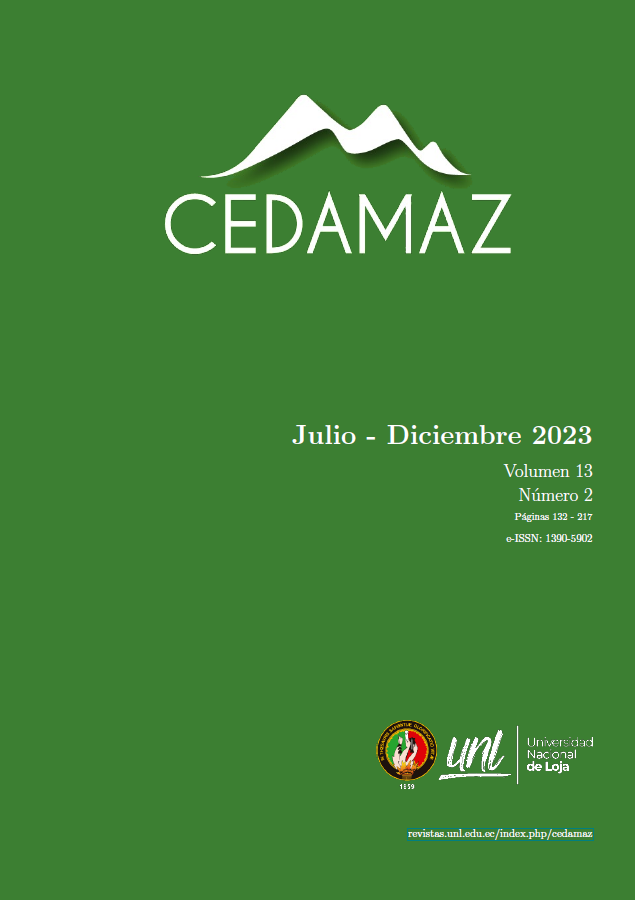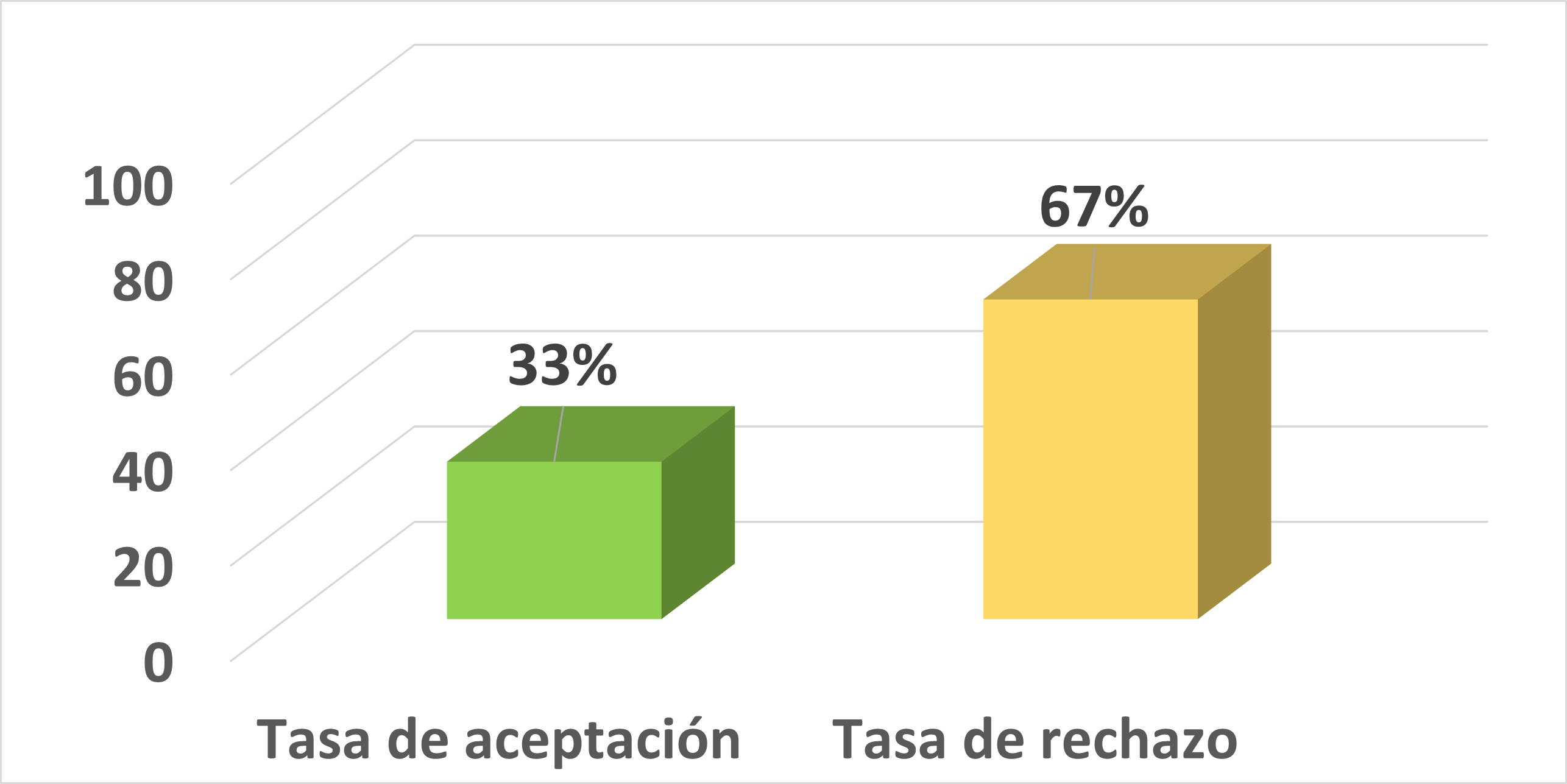Microscopic changes in the wood of 10 forest species from the city of Loja, Ecuador
Microscopic changes in the wood of 10 forest species from the city of Loja, Ecuador
DOI:
https://doi.org/10.54753/cedamaz.v13i2.1847Keywords:
Urban trees, Wood anatomy, Intra-annual changes, Quantitative characteristics, Tree-ringsAbstract
The urban tree species of the city of Loja provide multiple ecosystem services. However, the limited knowledge about their structure and growth hinders their management in arboriculture plans. Therefore, this study examined the anatomical characteristics of the wood from the ten most common tree species (nine broadleaved and one conifer) in the city of Loja. The analysis included qualitative, quantitative, and intra-annual aspects, using micrometric cuts in tangential, transversal, and radial planes and was based on the nomenclatura of the International Association of Wood Anatomists (IAWA). The results showed that, although the qualitative anatomical characteristics of the wood do not vary according to the growth site, the quantitative ones do. The most common anatomical features in broadleaved species were solitary vessels, alternate pitting, fiber walls ranging from thin to thick, and procumbent cell rays of 1 and 3 series. On an intra-annual basis, the differentiation between early and late wood was evident by the diameter of the vessels and fibers, a key aspect to better visualize the growth rings. Consequently, it is concluded that the anatomical characteristics, particularly the quantitative ones such as the length and diameter of the vessels, can serve as valuable site indicators to assess the adaptability of forest species in different urban areas of Loja.References
Adamo, G. M. (2002). Autoecología de la especie: CEDRO. Cartilla No4, Ministerio del Ambiente y de los Recursos Naturales Renovables y SEFORVEN, Caracas, Venezuela. Cedro | Jardín Botánico de Mérida. http://vereda.ula.ve/jardin_botanico/areastematicas/jardin-caducifolio/cedro/
Aguilar-Rodríguez, S., y Barajas-Morales, J. (2017). Anatomía de la madera de especies arbóteas de un bosque mesófilo de montaña: un enfoque ecológico-evolutivo. Botanical Sciences, 58(77), 51. https://doi.org/10.17129/botsci.1712 DOI: https://doi.org/10.17129/botsci.1712
Armijos, A. (2019). Fo Restales En El Sur Del Ecuador ”. https://dspace.unl.edu.ec/jspui/handle/123456789/21992
Barbosa, A. C. M., Pereira, G. A., Granato-Souza, D., Santos, R. M., y Fontes, M. A. L. (2018). Tree rings and growth trajectories of tree species from seasonally dry tropical forest. Australian Journal of Botany, 66(5), 414–427. https://doi.org/10.1071/BT17212 DOI: https://doi.org/10.1071/BT17212
Briceño-J., A. M., Rangel-Ch., J. O., y Marys-Bogino, S. (2018). Colombia wood anatomy andannuity of three rings of species of the dry forest in the caribbean. 169–178. https://doi.org/10.18387/polibotanica.46.10 DOI: https://doi.org/10.18387/polibotanica.46.10
Carlquist, S. (1987). Wood Anatomy of Noteworthy Species of Ludwigia (Onagraceae) with Relation to Ecology and Systematics. Annals of the Missouri Botanical Garden, 74(4), 889. https://doi.org/10.2307/2399455 DOI: https://doi.org/10.2307/2399455
Carlquist, S. (2000). Wood and stem anatomy of Sarcobatus (Caryophyllales): Systematic and ecological implications. Taxon, 49(1), 27–34. https://doi.org/10.2307/1223929 DOI: https://doi.org/10.2307/1223929
Cherubini, P., Gartner, B. L., Tognetti, R., Braker, O. U., Schoch, W., y Innes, J. L. (2003). Identification, measurement and interpretation of tree rings in woody species from mediterranean climates. Biol. Rev, 78, 119–148. https://doi.org/10.1017S1464793102006000 DOI: https://doi.org/10.1017/S1464793102006000
Chiu, S. T., y Ewers, F. W. (1992). Xylem structure and water transport in a twiner, a scrambler, and a shrub of Lonicera (Caprifoliaceae). Trees, 6(4), 216–224. https://doi.org/10.1007/BF00224339 DOI: https://doi.org/10.1007/BF00224339
Cipra Rodriguez, J. A., Montoya Yanavilca, A. E., Adriano Reyes, J. J., Colán de la Vega, X. del P., y Móstiga Rodríguez, M. J. (2020). Anatomía de la madera de Schinus molle L. con tumoraciones en zonas urbanas. Revista de Investigación de Agroproducción Sustentable, 4(1), 62. https://doi.org/10.25127/aps.20201.545 DOI: https://doi.org/10.25127/aps.20201.545
Coster, C. (1928). Zur anatomie und physiologie der zuwachszonen-und jahresringbildung in den tropen. Annales Jardim Botanica Buitenzorg, 38, 1–114. https://edepot.wur.nl/162386 DOI: https://doi.org/10.1163/9789004591189
Egoavil, G., Pereira, M., Klitzke, R. J., y Mora, E. G. (2020). Caracterización anatómica y variabilidad de los componentes de la madera de Calycophyllum spruceanum ( Benth ). Hook . Anatomical characterization and variation of components of Calycophyllum spruceanum ( Benth ). Hook . wood. 11(2), 93–106. https://doi.org/10.12953/2177-6830/rcm.v11n2p93-106 DOI: https://doi.org/10.12953/2177-6830/rcm.v11n2p93-106
Elaieb, M. T., Shel, F., Jalleli, M., Langbour, P., y Candelier, K. (2019). Propiedades físicas de la madera de cuatro especies de latifoliadas de porosidad anular: influencia de los radios sobre las contracciones tangencial y radial. Madera y Bosques, 25(2). https://doi.org/10.21829/MYB.2019.2521695 DOI: https://doi.org/10.21829/myb.2019.2521695
Feijoo, C., Ramon, D., y Pucha, D. (2018). Guía Para Cortes Anatómicos De La Madera (Issue October). Gärtner, H., Lucchinetti, S., y Schweingruber, F. H. (2014). New perspectives for wood anatomical analysis in dendrosciences: The GSL1- microtome. Dendrochronologia, 32(1), 47–51. https://doi.org/10.1016/J.DENDRO.2013.07.002 DOI: https://doi.org/10.1016/j.dendro.2013.07.002
Giménez, A., Moglia, J., y Gerez, R. (2005). Anatomia de madera. https://fcf.unse.edu.ar/archivos/seriesdidacticas/ sd-1-anatomia-de-madera.pdf
Giménez, M., y Moglia, J. (1998). Rasgos anatómicos característicos del hidrosistema de las principales especies arbóreas de la Región Chaqueña Argentina. Investiga ción Agraria. Sistemas y Recursos Forestales, ISSN 1131- 7965, Vol. 7, No 1-2, 1998, Págs. 53-72, 7(1), 53–72.
Grande, D., y Polanco, C. (2007). Descripción anatómica de la madera de cuarenta especies >del bosque. 10(20). DOI: https://doi.org/10.14483/udistrital.jour.colomb.for.2007.1.a11
Haines, H. A., Olley, J. M., Kemp, J., y English, N. B. (2016). Progress in Australian dendroclimatology: Identifying growth limiting factors in four climate zones. Science of the Total Environment, 572(December), 412–421. https://doi.org/10.1016/j.scitotenv.2016.08.096 DOI: https://doi.org/10.1016/j.scitotenv.2016.08.096
Higueras, E. (2008). La ciudad como ecosistema urbano. El Reto de La Ciudad Habitable y Sostenible, Pamplona. España. Pdf. https://www.marcialpons.es/libros/el-reto-dela-ciudad-habitable-y-sostenible/9788492507191/
Huarcaya, R. (2016). Universidad nacional del centro del peru. Igartúa, D. V., Piter, J. C., y Monteoliva, S. E. (2013). Propiedades xilotecnológicas de Acacia melanoxylon implantada en el sudeste de la Provincia de Buenos Aires - Argentina. Tesis Doctoral, 1–286.
León Hernandez, W. J. (2001). Anatomía del leño, aspectos ecologicos y filogenia en mangles de Venezuela. In Revista Forestal Venezolana (Vol. 45, Issue 2, pp. 191–203).
León Hernandez, W. J. (2009). Anatomía De La Madera Y Clave De Identificación Para Especies Forestales Vedadas En Venezuela. Revista Forestal Venezolana, Volumen 53(1), 51–62.
Maza, H. (2010). Anatomia macroscópica y algunas características físicas de siete especies maderables de pie de monte de la zona alta de la cuenca del Rio Puyango. In Revista Ecologica Forestal (Vol. 1, Issue 1, p. 150). http://dspace.unl.edu.ec:8080/xmlui/handle/123456789/327
Montaño-Arias, S. A., Camargo-Ricalde, S. L., y Grether, R. (2016). Anatomía de la madera de tres especies de Mimosa (Leguminosae-Mimosoideae) distribuidas en México. Madera Bosques, 22(1), 191–202. https://doi.org/10.21829/myb.2016.221486 DOI: https://doi.org/10.21829/myb.2016.221486
Monteoliva, S., y Igartúa, V. (2010). Variación anatómica de la madera de Acacia melanoxylon implantada en el sudeste de la provincia de Buenos Aires. 109, 1–7.
Olvera-Licona, G., Machuca, Borja, R., Corona, A., y Zaragoza, A. (2021). Xilotecnia de la madera de Schinus molleL. de una plantación forestal comercial en Hidalgo, México. 27, 1–19. https://doi.org/10.21829/myb.2021.2711567 DOI: https://doi.org/10.21829/myb.2021.2711567
Olvera, P., Paz, C. De, Sotelo, D., Isaías, Q., Alejandra, P., De, C., y Pérez, P. (2005). Influencia de los radios en algunas propiedades físicas y mecánicas de la madera de ocho encinos ( Quercus ) de Durango , México. https://www.redalyc.org/pdf/617/61711204.pdf
Poma, L. F. (1973). Descripcion macroscópica y microscopica de 15 maderas del Ecuador y clave de identificación con tarjetas perforadas. Instituto Interamericano de ciencias agrícolas de la OEA. Centro Tropical de Enseñanza e Investigación. Departamento de Ciencias Forestale. https://repositorio.catie.ac.cr/handle/11554/1117
Rangel, G. (2016). Descripción anatómica de la madera de Fresno Fraxinus uhdei ( Wenz .) Lingelsh. July. https://docplayer.es/63502251-Descripcionanatomica-de-la-madera-de-fresno-fraxinus-uhdeiwenz-lingelsh.html
Rathgeber, C. B. K., Decoux, V., y Leban, J. M. (2006). Linking intra-tree-ring wood density variations and tracheid anatomical characteristics in Douglas fir (Pseudotsuga menziesii (Mirb.) Franco). Annals of Forest Science, 63(7), 699–706. https://doi.org/10.1051/forest:2006050 DOI: https://doi.org/10.1051/forest:2006050
Rendle B. J. (1932). Anatomía de la madera como vínculo entre la botánica y la silvicultura. 130(3292), 834–836. https://www.nature.com/articles/130834a0 DOI: https://doi.org/10.1038/130834a0
Rojas-Badilla, M., Álvarez, C., Velásquez-Álvarez, G., Hadad, M., Quesne, C. Le, y Christie1, D. A. (2017). Anomalías anatómicas en anillos de crecimiento anuales de Austrocedrus chilensis ( D . Don ) Pic . -Serm . et Bizzarri en el norte de. 74(2), 269–281. DOI: https://doi.org/10.4067/S0717-66432017000200269
Rossi, S., Deslauriers, A., Anfodillo, T., Morin, H., Saracino, A., Motta, R., y Borghetti, M. (2006). Conifers in cold environments synchronize maximum growth rate of tree-ring formation with day length. New Phytologist, 170(2), 301–310. https://doi.org/10.1111/j.1469- 8137.2006.01660.x DOI: https://doi.org/10.1111/j.1469-8137.2006.01660.x
Sass-klassen, U., Gebrekirstos, A., Bra, A., y Mbow, C. (2014). ScienceDirect Opportunities and applications of dendrochronology in Africa. 48–53. https://doi.org/10.1016/j.cosust.2013.10.011 DOI: https://doi.org/10.1016/j.cosust.2013.10.011
Undurraga, J. P. (1997). Caracterización anatómica de madera de Salix L. http://revistacienciasforestales.uchile.cl/1997-1998_vol12-13/n1-2a8.pdf
Wodzicki, T. J. (2001). Natural factors affecting wood structure. Wood Science and Technology 2001 35:1, 35(1), 5–26. https://doi.org/10.1007/S002260100085 DOI: https://doi.org/10.1007/s002260100085
Published
How to Cite
Issue
Section
License
Copyright (c) 2024 CEDAMAZ

This work is licensed under a Creative Commons Attribution-NonCommercial-NoDerivatives 4.0 International License.
Those authors who have publications with this journal, accept the following terms:
- After the scientific article is accepted for publication, the author agrees to transfer the rights of the first publication to the CEDAMAZ Journal, but the authors retain the copyright. The total or partial reproduction of the published texts is allowed as long as it is not for profit. When the total or partial reproduction of scientific articles accepted and published in the CEDAMAZ Journal is carried out, the complete source and the electronic address of the publication must be cited.
- Scientific articles accepted and published in the CEDAMAZ journal may be deposited by the authors in their entirety in any repository without commercial purposes.
- Authors should not distribute accepted scientific articles that have not yet been officially published by CEDAMAZ. Failure to comply with this rule will result in the rejection of the scientific article.
- The publication of your work will be simultaneously subject to the Attribution-NonCommercial-NoDerivatives 4.0 International (CC BY-NC-ND 4.0)









